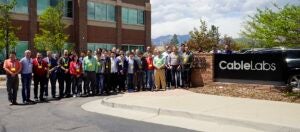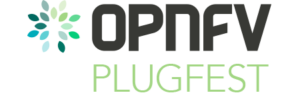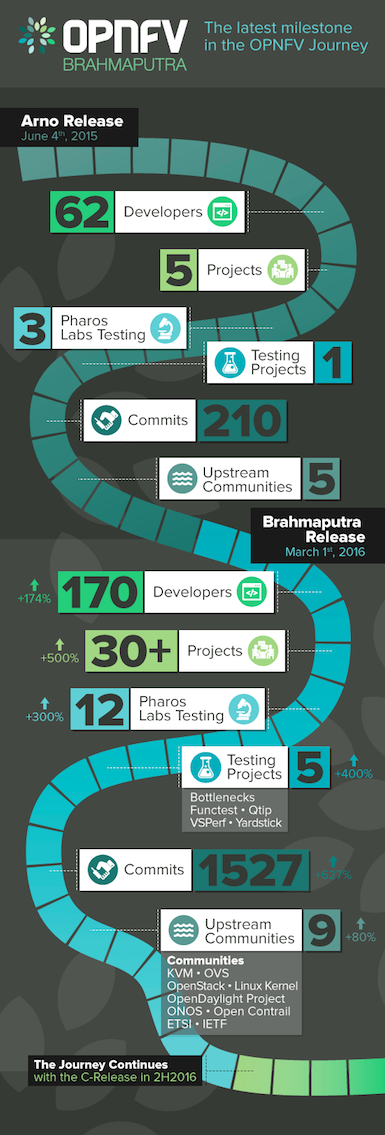 The OPNFV community is comprised of a diverse set of active developers who are passionate about transforming the industry through open source NFV. This new blog series highlights the people who are collaborating in the trenches to build a de facto standard open source platform for NFV.
The OPNFV community is comprised of a diverse set of active developers who are passionate about transforming the industry through open source NFV. This new blog series highlights the people who are collaborating in the trenches to build a de facto standard open source platform for NFV.
About Ildikó Váncsa
Ildikó is coordinating the OpenStack related activities at Ericsson and beyond this she is also working as a Software Developer. She is an active OPNFV contributor where her main focus is on the Promise and Doctor projects. She also contributes to OpenStack, mainly to the Nova and Ceilometer projects. Before Ericsson, Ildikó worked for OptXware Research and Development, Ltd. focusing on O&M, system management and virtualization.
What projects in OPNFV are you working on? Any new developments to share?
I mainly work on Promise, and to some extent I’m involved in Doctor as well.
Doctor is about improving fault management in the integrated platform. It targets OpenStack as the VIM focusing on 1) handling faults and 2) maintenance operations on the infrastructure layer. We improved the alarming component in the OpenStack Liberty release to support alarming on top of events. Aodh – the new alarming component in OpenStack – is now able to raise an alarm, for instance, when Nova emits a notification about an instance that went into an ERROR state. The new functionality is now available in the OPNFV Brahmaputra release as well. The team is also working to improve the feedback loop within OpenStack (for instance, you can now mark a compute service down in case of host failure, which brings a much faster reaction time to Nova). It is very interesting to see how the carrier-grade features are merging into OpenStack. The project is now focusing on addressing maintenance in the infrastructure.
Promise is focused on resource reservation. This is a requirement that comes form the operators; due to the limited amount of hardware resources available, scaling out on-demand is not always an option.
The project is evaluating two alternatives in parallel: the shim-layer and integrated approaches. The first one provides an API layer on top of OpenStack, which is responsible for both creating reservations and providing capacity management functionality. A basic set of the functionality is available in the Brahmaputra release of OPNFV. The team is now focusing more on the second alternative, which aims to integrate a solution into OpenStack. We are using the Blazar project as a base, which was created to provide resource reservation functionality in OpenStack; it is currently using the shelf API of Nova. We are following the activities around the Nova scheduler, as it is one of the building blocks of our planned architecture as well. Currently we are updating the code base of this module while also working on the long-term architecture of the integrated approach in parallel.
Where do you see OPNFV in five years?
To be honest, I try to keep myself back from making predictions. The overall IT industry, including telecom, is changing so rapidly that it’s really tough to tell where it will be in five years. I don’t even know where I will be in five weeks from now, not in five years! 🙂
Regarding OPNFV, I think we can bring speed into the telecom industry if we keep up with the current progress. Cloud and open source have turned things upside down in the IT industry already. The telco companies have their standardized processes and traditional ways of working, we were in a sleeping state a bit which started to change now and OPNFV can help much in this transition.
I hope OPNFV will not be a standalone community for long, but instead a thriving ecosystem with other upstream communities we’re trying to work together with. We’ll have a common roadmap, where NFV is taken into consideration. I also think that VNFs have to be designed in a cloud-aware manner, which will lead us to have a merging set of priorities in this big, common ecosystem. Most importantly I see OPNFV as the key in bringing all the pieces of the industry together into a big picture via the end-to-end integration and testing work we are doing.
One thing I’m sure of is that we still have plenty of work to do…
What is the biggest strength of the OPNFV community?
The biggest strength of OPNFV is the people, all the committers and contributors who are working hard to make this happen.
This community is full of motivated experts eager to make this community a success. OPNFV also provides a nice and friendly environment; people are very open and helpful. The fact that we already have our second release out also shows how dedicated people are in this community as the integration of all these components is not an easy puzzle to finish.
Due to the nature of the community, we are all trying to see the bigger picture. We also have very different viewpoints concentrated in one place by having service providers, vendors and IT companies on board. This mixture helps in finding the common language for the industry.
Do you have any advice for developers just starting out with OPNFV?
There are several parts of the development work which are less fun but not any less important. Don’t let things fall off the cliffs!
Always take a step back and try to imagine you’re the user of the features you’re working on. If you feel that you would not likely be the person to configure, use or troubleshoot the component you design and develop, then it is a sign to change it, even if that requires some sacrifices on the implementation side. Another important aspect is backward compatibility, which gets forgotten very often. It is very important to always see the big picture, including usability and quality!
What technology could you not live without?
I’m kind of in love with virtualization.
It was part of my studies at the university even before cloud became a big deal. I really, really like how much flexibility it can give you. It brings the utilization of hardware resources to another level.
Cloud technology lifted the whole thing even a level up, providing more flexibility and also more challenges; especially in the case of the telecom industry. We are moving to NFV and building telecom applications from VNFs, which can mean a full re-design in certain cases. This puts both the beauty and the beast in one box and it all becomes a balancing game, which provides many advantages by the end. I like that the technology we are building on opens up so many doors and gives so many possibilities.
What part of the world do you live in?
Hungary! I live in Budapest, the capital of the country, which is also pretty much the center of the country from a technology perspective; there are several multinational companies and more and more startups around. In the countryside, agriculture is still dominant. I like Budapest as it is a very vibrant city and it also has a nice view of the Danube. Basically it is the dream city of a hacker – lots of IT and cheap beer (although I’m more a wine person myself, which luckily is also available in good quantity)! I also encourage everyone who would like to visit as a tourist!
What do you when you’re not working?
I used to work as a bartender as a second shift, which was exhausting, but I liked it very much. I also enjoy cooking and baking, nowadays trying to figure out how to bake nice, not just tasty, macaroons! I like drawing as well, I plan to return to this hobby once and make it a larger part of my life than it is today.

 Tetsuya Nakamura
Tetsuya Nakamura

 Susan James, head of Product Line NFV Infrastructure, Business Unit Cloud & IP, Ericsson, will deliver a keynote at the
Susan James, head of Product Line NFV Infrastructure, Business Unit Cloud & IP, Ericsson, will deliver a keynote at the  Chris Price
Chris Price The OPNFV community is comprised of a diverse set of active developers who are passionate about transforming the industry through open source NFV. This new blog series highlights the people who are collaborating in the trenches to build a de facto standard open source platform for NFV.
The OPNFV community is comprised of a diverse set of active developers who are passionate about transforming the industry through open source NFV. This new blog series highlights the people who are collaborating in the trenches to build a de facto standard open source platform for NFV. OPNFV will host the first OPNFV Plugfest, May 9-13, at our CableLabs campus in Louisville, CO, and I couldn’t be more excited. This is where some of the initial conversations happened around forming
OPNFV will host the first OPNFV Plugfest, May 9-13, at our CableLabs campus in Louisville, CO, and I couldn’t be more excited. This is where some of the initial conversations happened around forming 
